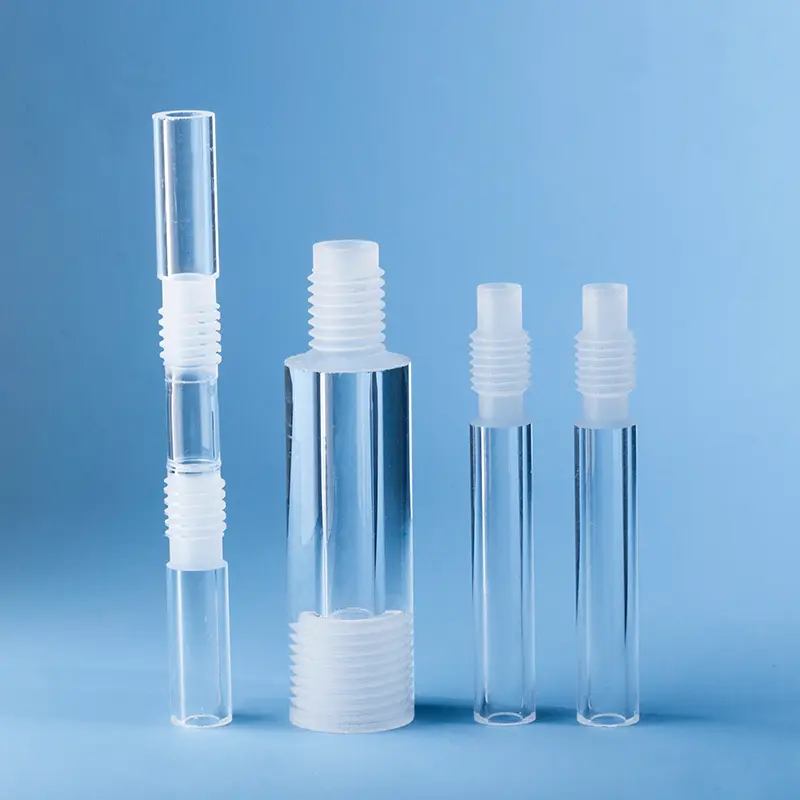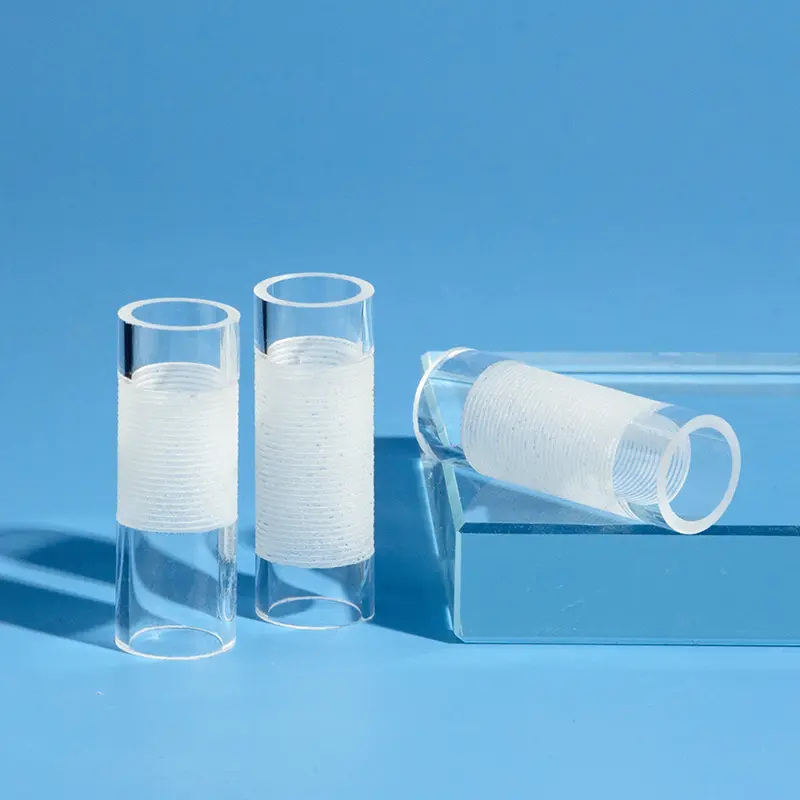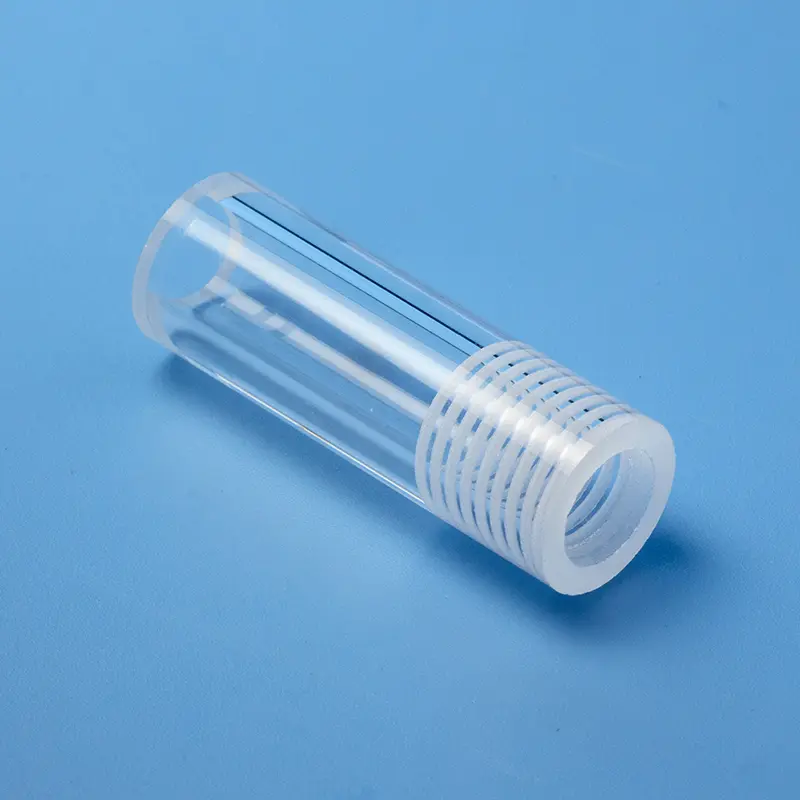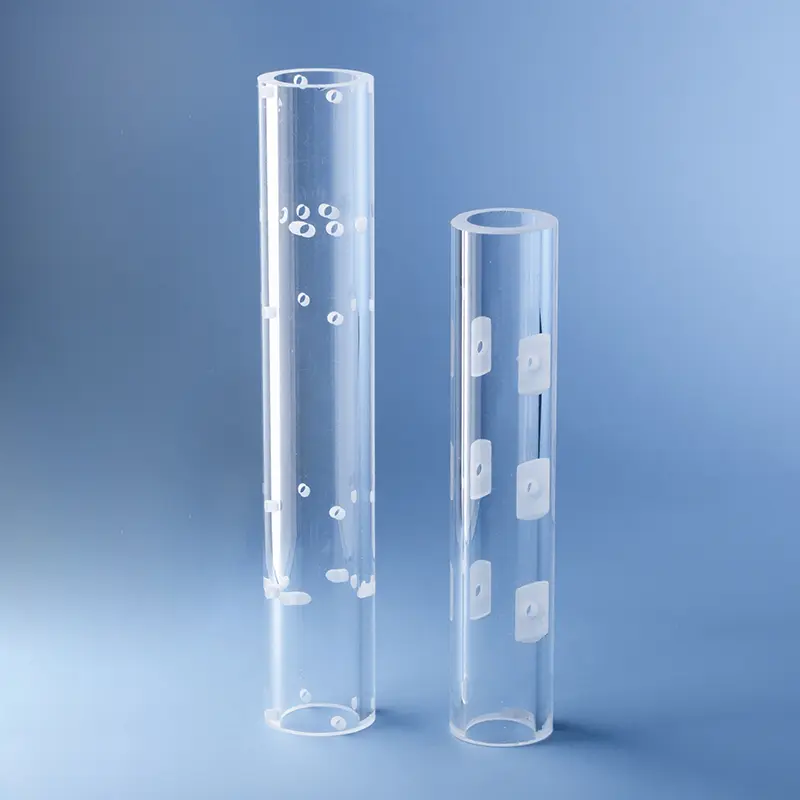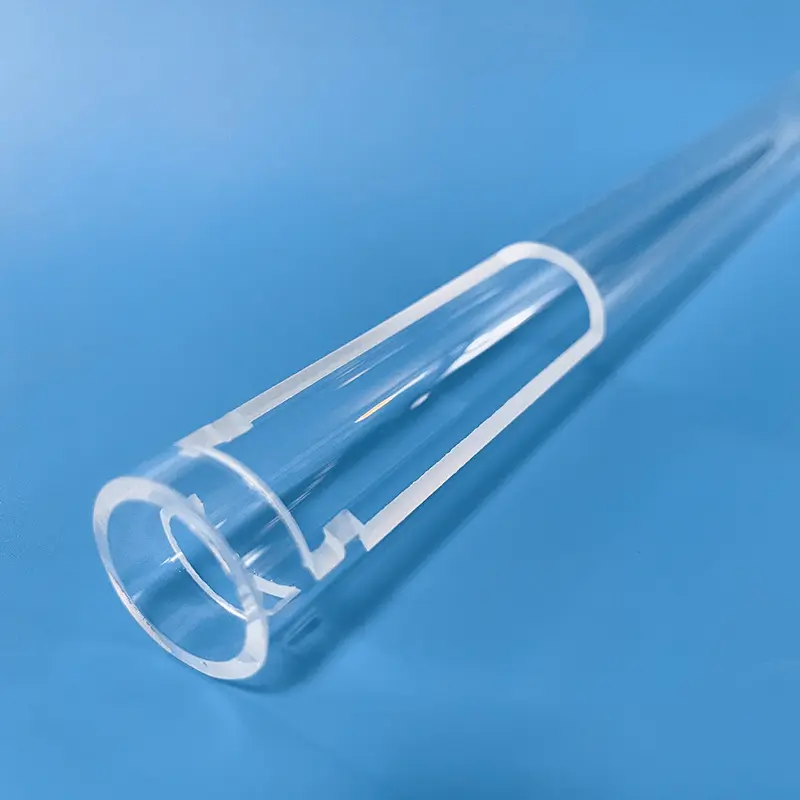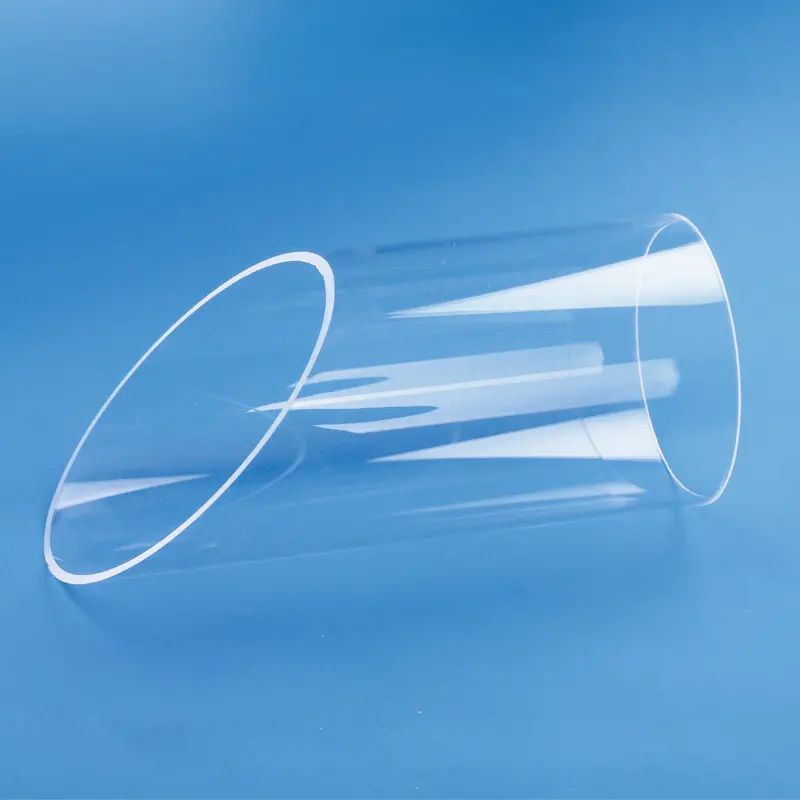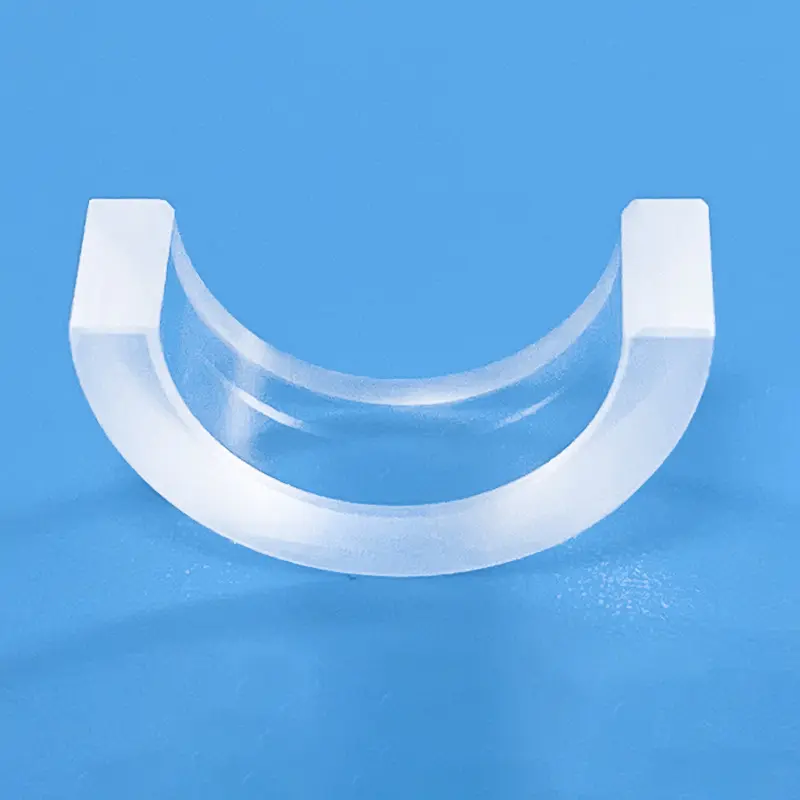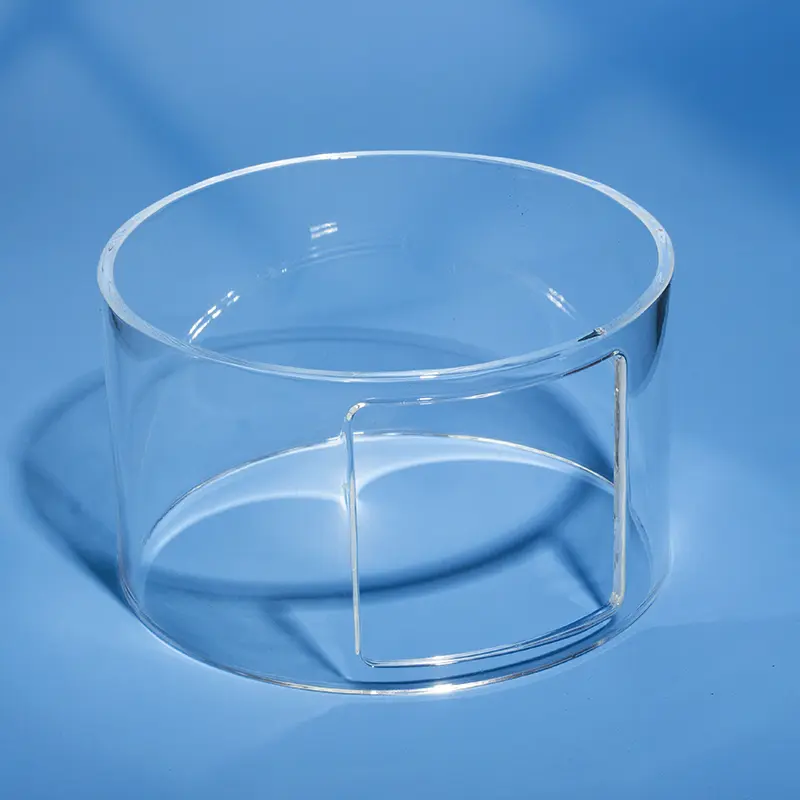Cold precision machining of quartz tubes primarily involves the use of mechanical processing techniques such as slicing, slotting, drilling, grinding, and polishing of raw quartz tube materials to manufacture specific products. These processing steps typically require high-precision equipment such as diamond abrasive cutting machines, laser cutting machines, and high-pressure waterjet cutting machines to ensure that the machined quartz tubes meet the required dimensions and shapes.
| 속성 콘텐츠 | 속성 값 |
|---|---|
| SiO2 | 99.99% |
| 밀도 | 2.2×10³ kg/cm³ |
| 경도 | 5.5 - 6.5 모스 스케일 570 KHN 100 |
| 인장 강도 | 4.8×10⁷ Pa(N/mm2)(7000psi) |
| 압축 강도 | >1.1×10⁹ Pa(160,000psi) 이상 |
| 열팽창 계수 | 5.5×10-⁷ cm/cm-°C(20°C-320°C) |
| 열 전도성 | 1.4W/m-°C |
| 비열 | 670 J/kg-°C |
| 연화 포인트 | 1730°C(3146°F) |
| 어닐링 포인트 | 1210°C(2210°F) |
| 스트레인 포인트 | 1120°C(2048°F) |
| 작업 온도 | 1200°C(2192°F) |
| 전기 저항 | 7×10⁷ 옴 cm(350°C) |
| 크기 | 사용자 지정 |
| 로고 | 맞춤형 로고 수락 |
고온 내성
석영 튜브는 최대 1250°C의 온도에서도 변형이나 균열 없이 견딜 수 있습니다.
부식
저항
이 튜브는 산, 알칼리 및 기타 부식성 물질에 대한 탁월한 내성을 보여줍니다.
하이라이트
투과율
석영 유리는 자외선부터 적외선 스펙트럼에 걸쳐 뛰어난 빛 투과율을 제공합니다.
낮은 열팽창 계수
열팽창 계수를 최소화하여 상당한 온도 변화에도 치수 안정성을 보장합니다.
Common processing methods include diamond abrasive cutting, laser cutting, high-pressure waterjet cutting, precision grinding, lapping, and polishing.
Cold precision machining of quartz tubes is widely used in industries such as semiconductors, optoelectronics, medical devices, aerospace, and chemical analysis because these industries require high precision and high purity quartz products.
The advantages of cold machining are that it maintains the original physical and chemical properties of the quartz material and avoids changes in material performance that can be caused by thermal processing. It also allows for high-precision machining and high surface quality.
Ensuring machining precision requires the use of high-precision machining equipment and precise measuring tools. It also requires strict quality control procedures, including precise design prior to processing, real-time monitoring during processing, and precise measurements after processing.
자주 묻는 질문
석영 유리는 우수한 물리적 및 화학적 특성, 매우 높은 기계적 경도, 우수한 전기 절연성, 고온 및 내식성, 낮고 안정적인 지연 성능, 우수한 빛 투과율 등을 갖춘 단단하고 부서지기 쉬운 소재입니다. 반도체, 광학, 전기, 화학, 항공우주, 자동차 및 기타 분야에서 널리 사용됩니다. 단단하고 부서지기 쉬운 재료는 가공이 어렵고 많은 분야에서 가장자리 붕괴가 적고 재료 손실이 적으며 단면 거칠기가 낮고 절단 두께 범위가 넓은 절단 공정이 절실히 필요합니다. 석영 유리의 전통적인 절단 방법은 기계식 절단, 즉 휠 절단입니다. 비 전통적인 절단 방법에는 워터젯 절단, 전기 화학 방전 와이어 절단, 연속 레이저 절단 등이 포함됩니다. 기계식 절단은 비용이 저렴하지만 휠과 재료 사이의 접촉으로 인해 공구 마모가 크고 재료가 공구에 의해 쉽게 오염됩니다. 석영 유리는 가장자리 붕괴, 미세 균열 및 잔류 응력이 발생하기 쉬우므로 재료의 강도와 성능에 영향을 미칩니다! 곡선 절단이 어렵고 연마 및 연마와 같은 후처리가 필요합니다. 레이저 절단은 재료에 직접 접촉하지 않고 접촉 응력이 없으며 복잡한 곡선 절단을 수행할 수 있습니다. 피코초 레이저는 작은 스폿 직경, 고정밀, 재료와의 짧은 작용 시간, 작은 작용 면적의 장점을 가지고 있으며 단단하고 부서지기 쉬운 재료의 가공에 적합합니다.
。



